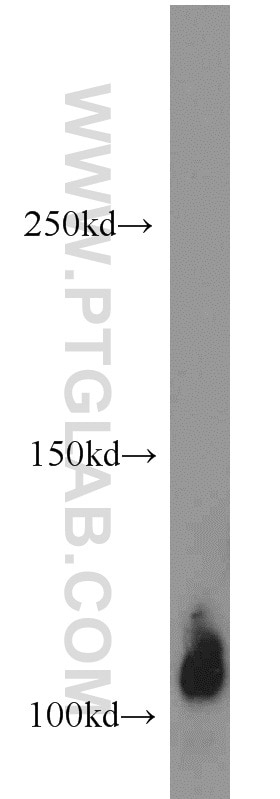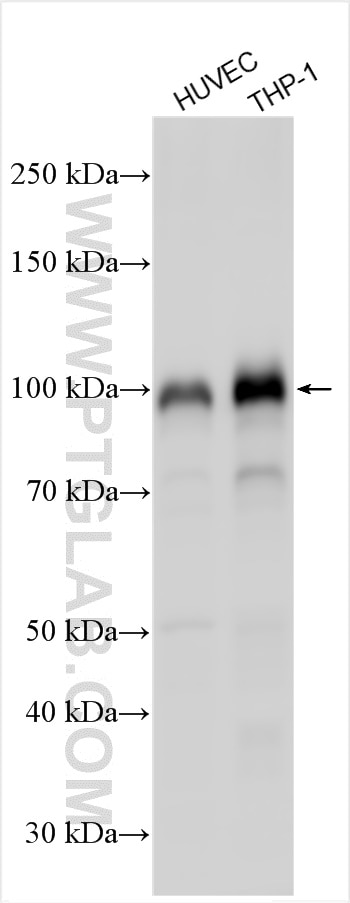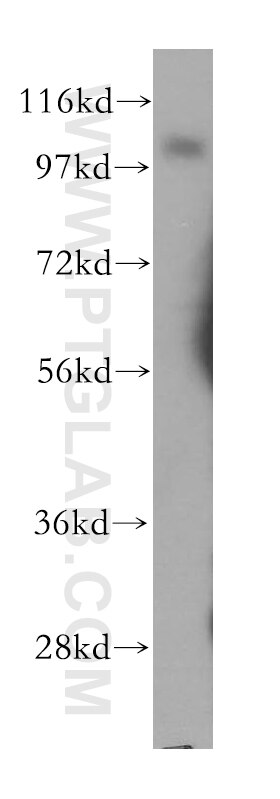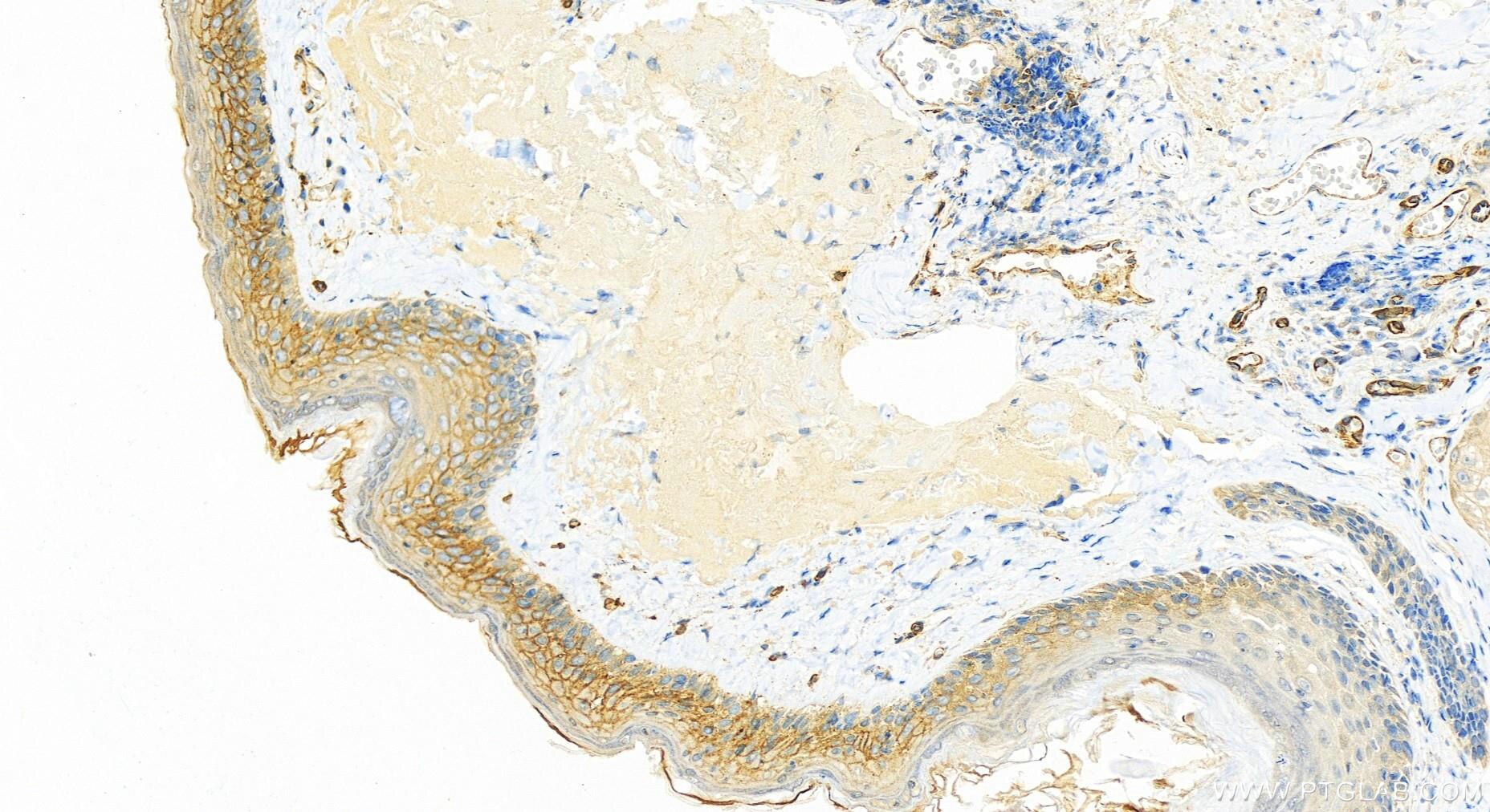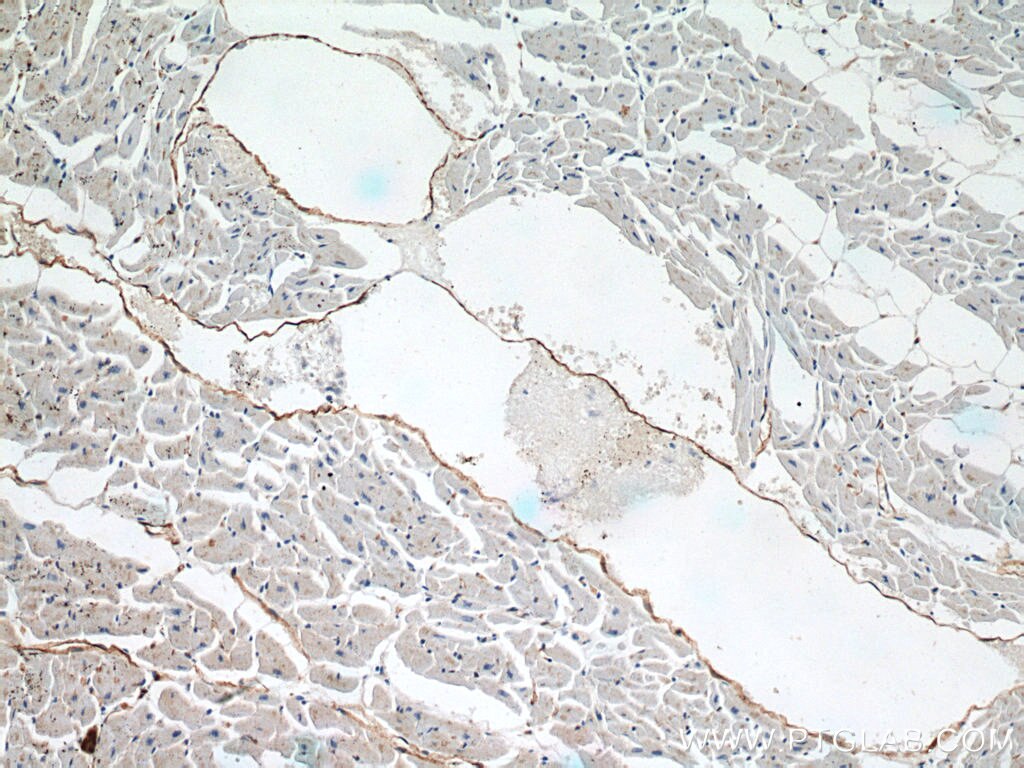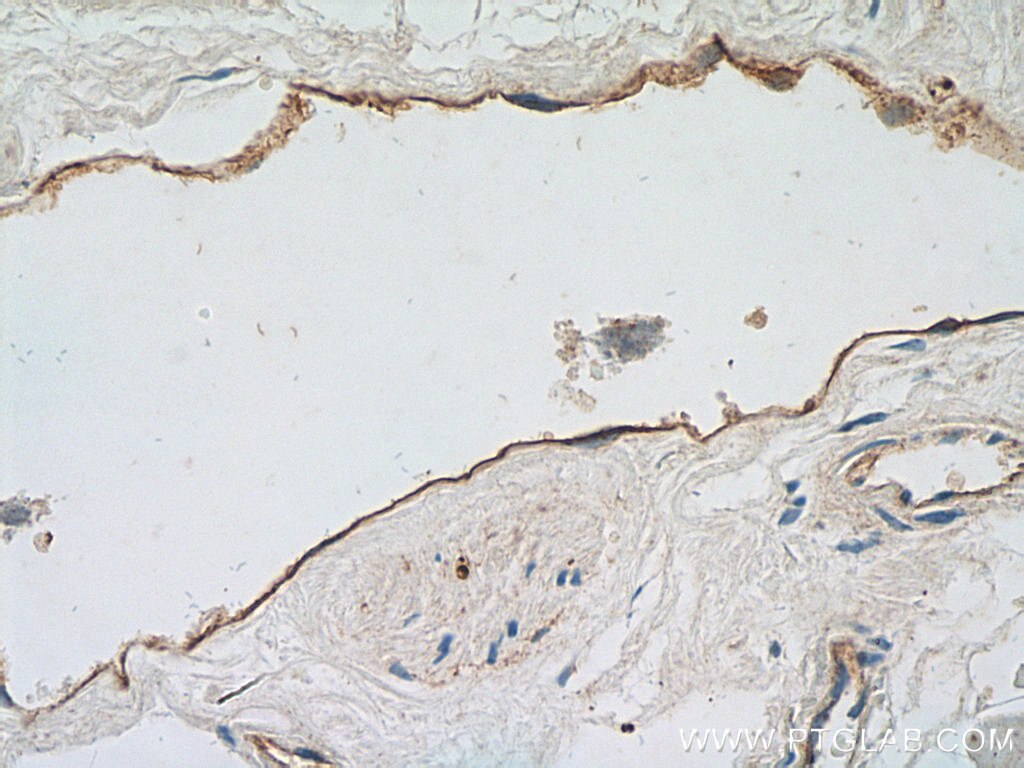Anticorps Polyclonal de lapin anti-CD141/Thrombomodulin
CD141/Thrombomodulin Polyclonal Antibody for WB, IHC, ELISA
Hôte / Isotype
Lapin / IgG
Réactivité testée
Humain et plus (1)
Applications
WB, IHC, IF, ELISA
Conjugaison
Non conjugué
N° de cat : 14318-1-AP
Synonymes
Galerie de données de validation
Applications testées
| Résultats positifs en WB | cellules HUVEC, cellules THP-1, tissu cardiaque humain |
| Résultats positifs en IHC | tissu cardiaque humain, tissu de cancer de la peau humain il est suggéré de démasquer l'antigène avec un tampon de TE buffer pH 9.0; (*) À défaut, 'le démasquage de l'antigène peut être 'effectué avec un tampon citrate pH 6,0. |
Dilution recommandée
| Application | Dilution |
|---|---|
| Western Blot (WB) | WB : 1:1000-1:8000 |
| Immunohistochimie (IHC) | IHC : 1:200-1:800 |
| It is recommended that this reagent should be titrated in each testing system to obtain optimal results. | |
| Sample-dependent, check data in validation data gallery | |
Applications publiées
| WB | See 4 publications below |
| IHC | See 4 publications below |
| IF | See 3 publications below |
Informations sur le produit
14318-1-AP cible CD141/Thrombomodulin dans les applications de WB, IHC, IF, ELISA et montre une réactivité avec des échantillons Humain
| Réactivité | Humain |
| Réactivité citée | rat, Humain |
| Hôte / Isotype | Lapin / IgG |
| Clonalité | Polyclonal |
| Type | Anticorps |
| Immunogène | CD141/Thrombomodulin Protéine recombinante Ag5558 |
| Nom complet | thrombomodulin |
| Masse moléculaire calculée | 60 kDa |
| Poids moléculaire observé | 105 kDa |
| Numéro d’acquisition GenBank | BC035602 |
| Symbole du gène | THBD |
| Identification du gène (NCBI) | 7056 |
| Conjugaison | Non conjugué |
| Forme | Liquide |
| Méthode de purification | Purification par affinité contre l'antigène |
| Tampon de stockage | PBS with 0.02% sodium azide and 50% glycerol |
| Conditions de stockage | Stocker à -20°C. Stable pendant un an après l'expédition. L'aliquotage n'est pas nécessaire pour le stockage à -20oC Les 20ul contiennent 0,1% de BSA. |
Informations générales
Thrombomodulin, also known as CD141, is an endothelial cell surface glycoprotein that forms a 1:1 complex with the coagulation factor thrombin and plays an important role as a natural anticoagulant. Thrombomodulin serves to convert thrombin from a procoagulant protein into the activator for protein C. Once converted to activated protein C (APC), this protein serves as a major anticoagulant in blood (PMID: 2827310). Thrombomodulin is also located in other cells (keratinocytes, osteoblasts, macrophages,...) where it might be involved in cell differentiation or in inflammation (PMID: 9814688). In humans, thrombomodulin is encoded by the THBD gene. Mutations in this gene are a cause of thromboembolic disease, also known as inherited thrombophilia. Thrombomodulin is glycosylated and has an apparent molecular weight of 75 to 110 kDa (PMID: 1650405; 2827310).
Protocole
| Product Specific Protocols | |
|---|---|
| WB protocol for CD141/Thrombomodulin antibody 14318-1-AP | Download protocol |
| IHC protocol for CD141/Thrombomodulin antibody 14318-1-AP | Download protocol |
| Standard Protocols | |
|---|---|
| Click here to view our Standard Protocols |
Publications
| Species | Application | Title |
|---|---|---|
Bioengineered The crescendo pulse frequency of shear stress stimulates the endothelialization of bone marrow mesenchymal stem cells on the luminal surface of decellularized scaffold in the bioreactor | ||
Front Cell Dev Biol Crocin Improves Endothelial Mitochondrial Dysfunction via GPx1/ROS/KCa3.1 Signal Axis in Diabetes. | ||
Diagnostics (Basel) Urinary SARS-CoV-2 RNA Is an Indicator for the Progression and Prognosis of COVID-19. | ||
Interact Cardiovasc Thorac Surg Atrial endocardial expression of von Willebrand factor and thrombomodulin is associated with recurrence after minimally invasive surgical atrial fibrillation ablation. | ||
Ther Apher Dial Decreased Expression of Thrombomodulin in Endothelial Cells by Fibroblast Growth Factor-23/α-Klotho. | ||
Clin Appl Thromb Hemost Endocardial Changes in Nonvalvular Atrial Fibrillation Without Atrial Thrombus-Thrombomodulin and Tissue Factor Pathway Inhibitor. |
